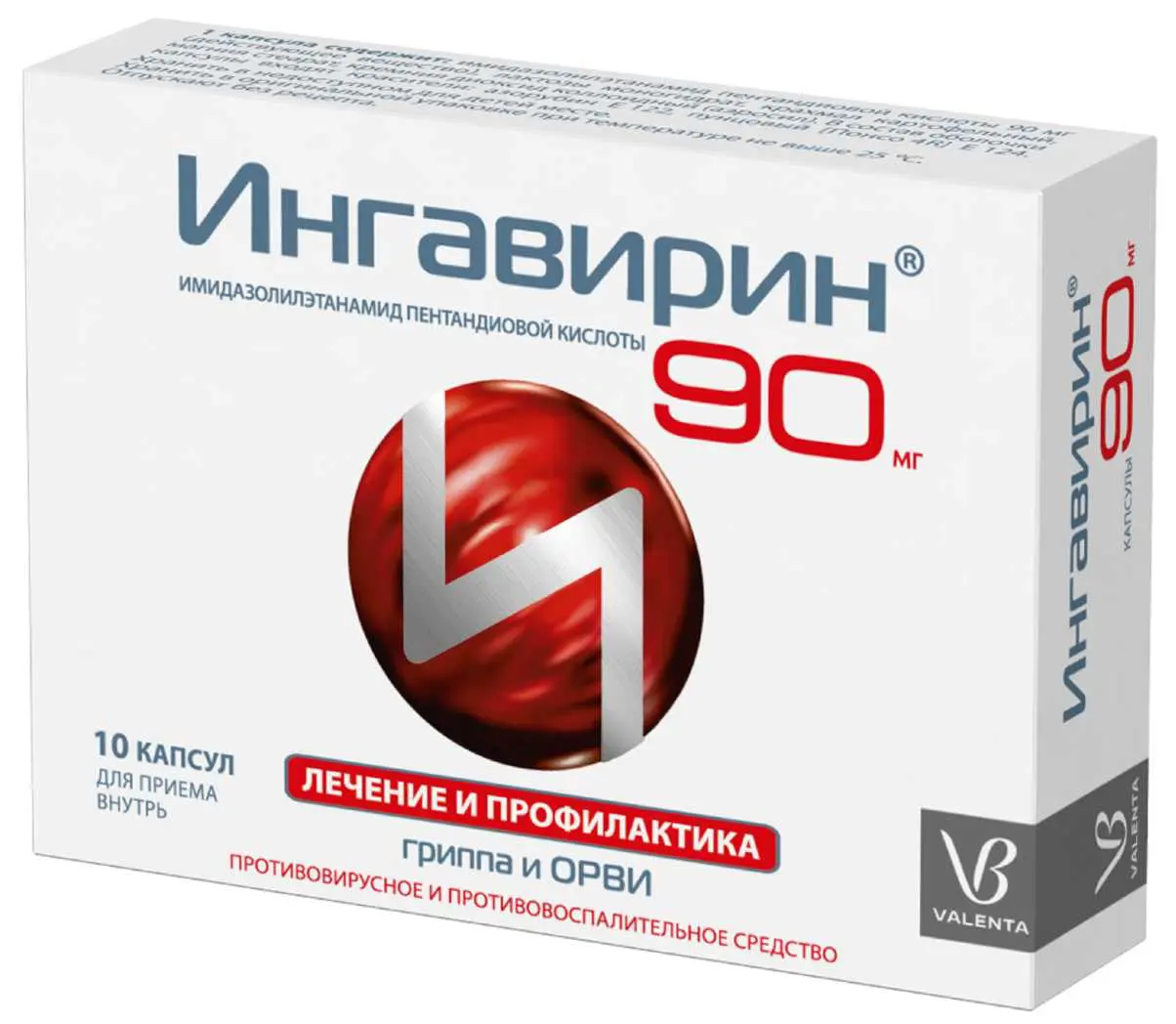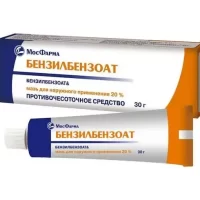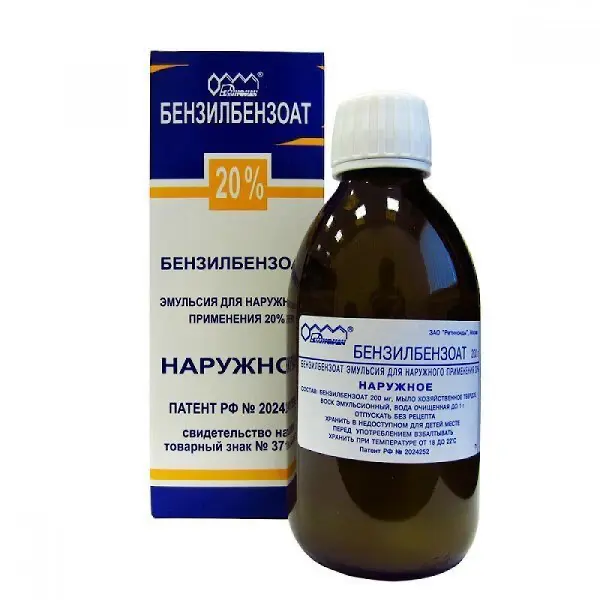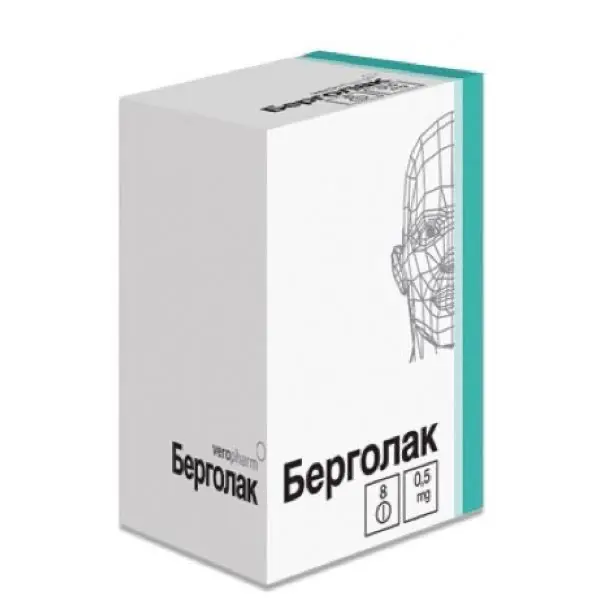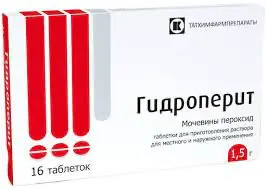Description
Ingavirin Pharmacodynamics
Antiviral drug.
In preclinical and clinical trials the efficacy of Ingavirin® against influenza viruses of type A (A(H1N1), including “swine” A(H1N1)pdm09, A(H3N2), A(H5N1)) and type B, adenovirus, parainfluenza virus, respiratory syncytial virus; in preclinical studies: coronavirus, meta-pneumovirus, enteroviruses, including coxsackievirus and rhinovirus.
Ingavirin® promotes accelerated elimination of viruses, reduction of duration of the disease, reduction of risk of complications.
The mechanism of action is realized at the level of infected cells through stimulation of innate immunity factors that are suppressed by viral proteins. In experimental studies, in particular, it was shown that Ingavirin® increases the expression of interferon receptor type I IFNAR on the surface of epithelial and immunocompetent cells. Increased density of interferon receptors leads to increased sensitivity of cells to signals of endogenous interferon. The process is accompanied by activation (phosphorylation) of protein-transmitter STAT1 transmitting a signal to cell nucleus for induction of antiviral genes. It was shown that under the conditions of infection, the drug stimulates the production of antiviral effector protein MxA, which inhibits intracellular transport of ribonucleoproteins of various viruses, slowing down the process of viral replication.
Ingavirin® causes increase of interferon content in blood up to physiologic norm, stimulates and normalizes decreased ability of blood leukocytes to produce interferon. Causes generation of cytotoxic lymphocytes and increases the content of NK-T cells, which have high killer activity against virus-infected cells.
Its anti-inflammatory effect is due to suppression of production of key proinflammatory cytokines (tumor necrosis factor (TNF-?), interleukins (IL-1? and IL-6), and decrease of myeloperoxidase activity.
Experimental studies have shown that the combined use of Ingavirin® with antibiotics increases the effectiveness of therapy on the model of bacterial sepsis, including that caused by penicillin-resistant strains of Staphylococcus aureus.
Experimental toxicological studies indicate a low level of toxicity and a high safety profile of the drug.
According to the parameters of acute toxicity, Ingavirin® belongs to the 4th class of toxicity – “Low toxic substances” (in determining the LD50 in acute toxicity experiments, lethal doses of the drug could not be determined).
The drug does not have mutagenic, immunotoxic, allergic and carcinogenic properties, it has no local irritant effect. Ingavirin® has no effect on reproductive function, has no embryotoxic and teratogenic action.
Efficacy in children
In double-blind, randomized, placebo-controlled, multicenter study to evaluate clinical efficacy and safety of Ingavirin® preparation in daily dose of 60 mg for treatment of flu and other ARVI in 180 children aged 13-17 years old, it was shown that Ingavirin® was significantly superior to placebo, normalizing body temperature faster, relieving intoxication, fever and catarrhal symptoms.
Double blind randomized placebo controlled multicenter study to evaluate clinical efficacy and safety of Ingavirin® in daily dose of 60 mg for treatment of flu and other ARIs in 310 children aged 7-12 years showed that Ingavirin® has significantly higher efficacy compared to placebo and provides faster (on average for 18 hours) decrease of body temperature and disappearance of intoxication symptoms (pain in throat, farting, pain while swallowing, stuffy nose, runny nose).
Indications
Treatment and prevention of influenza A and B and other acute respiratory viral infections (adenovirus, parainfluenza, respiratory syncytial infection, rhinovirus infection) in adults and children from 3 years old.
Contraindications .
Hypersensitivity to the active substance or any other component of the drug.
Lactase deficiency, lactose intolerance, glucose-galactose malabsorption.
Pregnancy.
Breast-feeding period.
Childhood under 3 years of age.
Administration during pregnancy and breast feeding period
Application of the drug during pregnancy has not been studied.
Lactation has not been studied during lactation, therefore, if it is necessary to use the drug during lactation, breast-feeding should be stopped.
Dosage and administration method
- Orally. Regardless of the meal.
- In children from 3 to 6 years of age who have difficulties in swallowing the capsule, it is allowed to dilute its contents in water or apple juice. To do this, carefully open the capsule over a bowl with a small amount (50-70 ml) of boiled water or apple juice at room temperature, pour the contents of the capsule into the water or juice, stir the mixture for 20 seconds and drink it as a whole. Sugar may be added. The mixture should be prepared immediately before ingestion; ready-made mixture should not be stored.
- For treatment and prevention of flu and acute respiratory viral infections, adults are prescribed 90 mg once a day, children from 7 years – 60 mg once a day, children from 3 to 6 years – 30 mg once a day.
- Duration of treatment of influenza and acute respiratory viral infections in adults and children from 7 years old – 5 to 7 days (depending on the severity of the condition).
- Duration of treatment of influenza and acute respiratory viral infections in children from 3 to 6 years old – 5 days. The drug shall be used from the moment of the appearance of the first symptoms of the disease, it is desirable not later than within 2 days after the beginning of the disease.
- For prevention of flu and acute respiratory viral infections after contact with sick persons, the drug is prescribed for 7 days to adults and children from 7 years old, and for 5 days to children from 3 to 6 years old.
- If after 5 days of treatment no improvement occurs or symptoms worsen or new symptoms appear, it is necessary to consult a doctor. Use the drug only according to those indications, that method of use and in those doses specified in the instructions.

